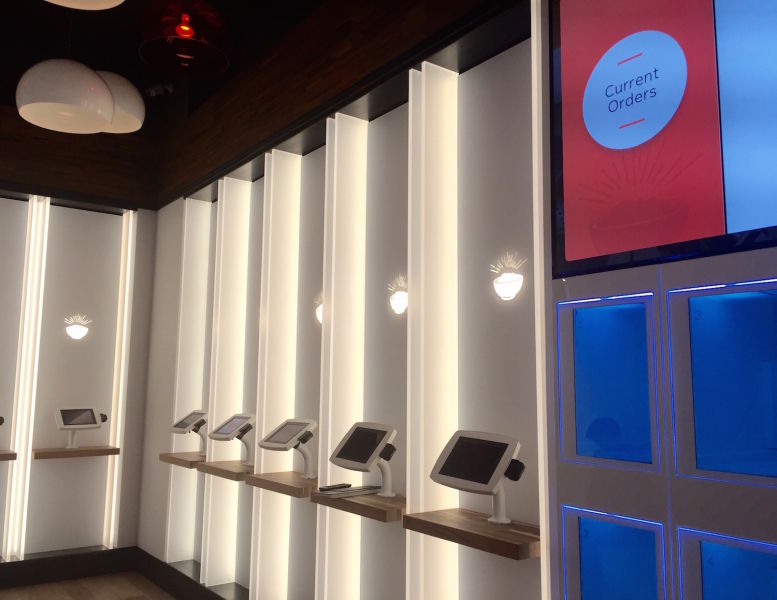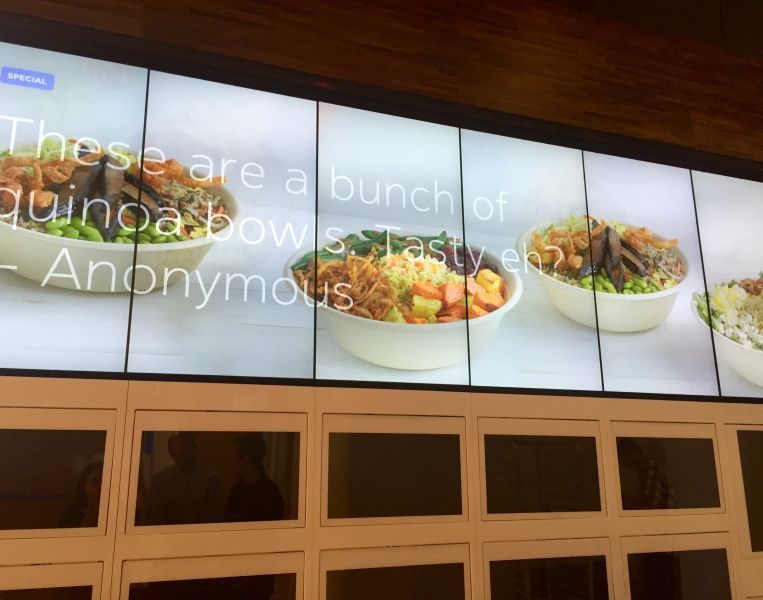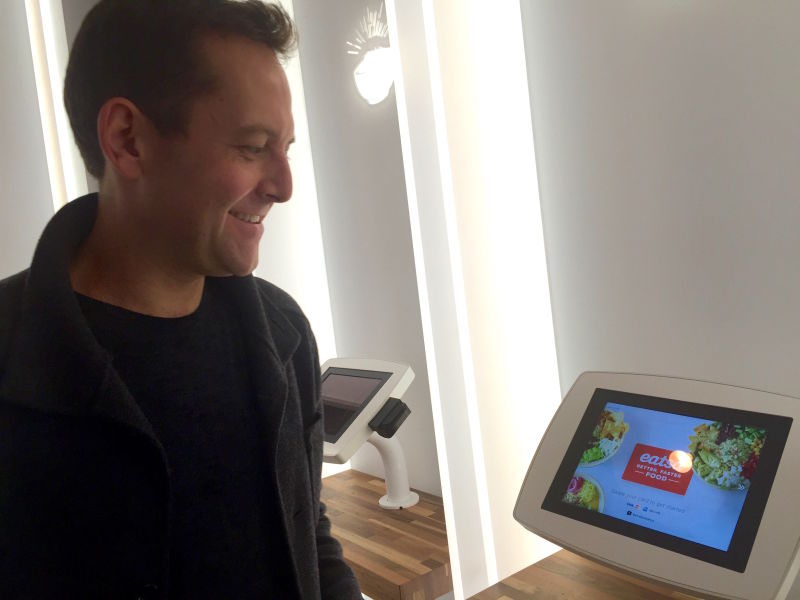A new fast food chain called Eatsa aims to deliver a healthy, tasty meal for under $10. The catch? Meat-lovers will need to forgo burgers and carnitas burritos in favor of quinoa, a protein-filled grain crop that looks a bit like couscous.
Last week, I stopped by the downtown San Francisco location (121 Spear Street) for a tour of the facility before its official opening on August 31st. What immediately stood out to me is the clean look of the place, which resembles an Apple Store in its design, with the row of white tablet devices where diners can place their order.
Eatsa is the latest restaurant to experiment with virtual alternatives to wait staff. After you place an order at a kiosk, you pick it up a few minutes later behind a glass door or "cubby." The only humans in sight are the concierges, who can answer questions that you may have about the software, and the dozen or so staff in the kitchen.
Across the country, restaurants are looking for innovative ways to keep humans out of the picture. But what's unique about Eatsa is the focus on health and taste. It's a fully-automated experience, so Eatsa can afford to offer high-quality food for less. Workers' salaries account for about 30 percent of the restaurant industry's costs.
The team spent over two years rigorously testing the texture of the sauces and the grain to optimize the taste. Eatsa will also offer a range of beverages, which are sugar-free or low in sugar. Eatsa plans to open two more locations in the coming months, including a restaurant in Los Angeles.


